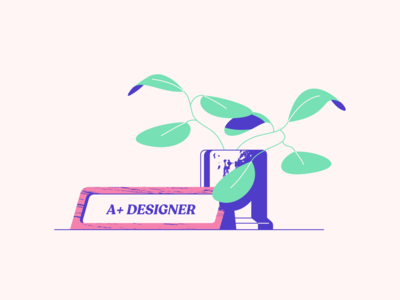An email inbox filled to the brim with client folders and incoming messages. A Slack channel with one-off requests and bits of feedback. A few texts and phone calls with meeting notes you’ve jotted down on Stickies. As a designer, this may be your current method for organizing and managing your projects.
While it’s possible you’ve made this function for you, you probably don’t feel like you’re getting the most efficiency or security out of this strategy. For instance, have you found yourself digging around for the latest piece of feedback from a client on a design or not working off the latest version of a design?
So what’s the fix? Maybe you’ve heard of project management — you may have even looked into a tool or two, but felt that they were created with tech, business, and other left-brained people in mind. Project management hasn’t traditionally been designer-friendly, lacking critical creative elements like collaborative features and asset storage. But that is rapidly changing, and there are many platforms that now take creatives into account — or even put them front-and-center.
Let’s take a deeper dive into the project management features that matter most to designers, and identify ways to digitize your processes.
✏️ Thanks to our friends at CROOW for writing and sponsoring this blog post!
Common designer pain points
For designers, there are common pain points that come up throughout the course of projects. For the design team at Sparxoo, the most devilish aspect of design is in the up-front details.
“When I’m not involved in the initial client meeting, it can be difficult for me to support my design team when they’re looking for feedback,” says Janel Gancena, Sparxoo’s Art Director. “Initially, there wasn’t a place I could reference to locate all of those briefing details, so I’d have to spend time with my designers asking for background and context before I could even begin to support them.”
“When there’s a better brief upfront, that usually means there are fewer revisions later,” says Lindsey Chapman, Senior Studio Designer at Sparxoo. “It also helps me get started with a project — without context, it can be challenging to come up with ideas from scratch.”
Kaeli Hammer, the newest Studio Designer on the Sparxoo team, agrees. “As a younger designer, I don’t have a set-in-stone process yet so don’t always know where to start. Having things to reference and a detailed brief can really help.”
In addition to detailed, centrally located briefs, the Sparxoo design team says a big challenge in the past was keeping feedback organized. “We relied mostly on emails and Slack chats, meaning things could slip through the cracks a lot easier,” Kaeli says.
“This would occasionally cause the feedback to be in multiple places, since everyone did it a little differently,” Lindsey says. “And this could also lead to contradictory feedback that was hard to keep track of,” Janel adds.
Essential project management features for designers
With these pain points identified, PM platforms have been developed to offer up solutions. Designer-first platforms centralize communications both internally and externally, allowing for clients to easily hop onto deliverables and provide feedback directly on design files all in one place.
There are a number of features essential to the success of creative projects, but let’s outline the most effective.
📌 Project Request Templates
Through a request feature, clients can provide detailed briefs of the projects and assets they need, setting designers up for success with clarity of vision at the outset. When you can create your own project and request templates, you can customize the information you want your clients to provide up front, meaning no critical details will be left out of a brief. This will standardize your intake process, and keep the details of your different projects organized, and easily accessible.
📌 Approvals
Another critical feature for designers is an approval feature. This helps to streamline the feedback process and remove the endless back-and-forth email chain, too. Designers are able to upload versions of deliverables directly into a platform, and clients can leave comments on the exact spots they want tweaked. This can also help your team at large keep track of the evolution of a design, so everyone stays on the same page.
📌 Brand Asset Library
A brand asset library allows for designers to upload brand colors, fonts, logos, and other essentials for easy reference and access. With proper folder organization, you can keep all of your clients’ information in one tool.
Use a project management tool built for designers
Designers want to spend their time looking for creative inspiration and collaborating with teammates on fresh ideas. Spending thirty minutes digging through email chains to find a specific piece of feedback is nobody’s idea of a good time. And project management is good for business — it can raise your team’s productivity 20-25%, and makes creative agencies who use is 252% more likely to report project success. By adopting a collaboration-focused project management tool, you can reduce confusion amongst your team, your account managers, and your clients, and spend time doing what you love — designing.
When creative and marketing teams are asked about project management systems, general well-known platforms like Asana might still come to mind. To help creative teams expand their horizons, CROOW published a list of the 10 Best Asana Alternatives for Project Management. When you find the right collaborative platform that meets your needs, you’ll jumpstart your project success. ■
🎨 Blog header illustration by Fruzka from Ouch!
Find more Process stories on our blog Courtside. Have a suggestion? Contact stories@dribbble.com.











